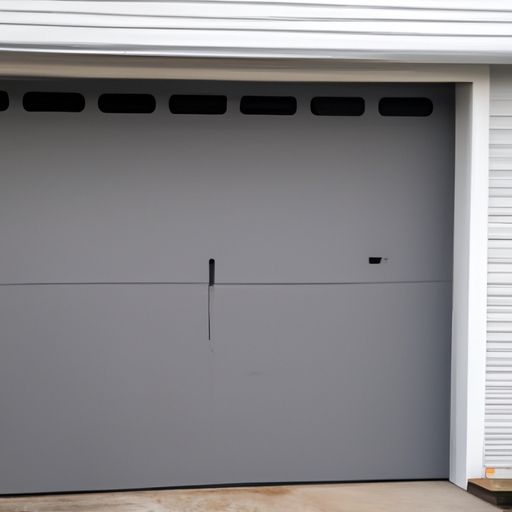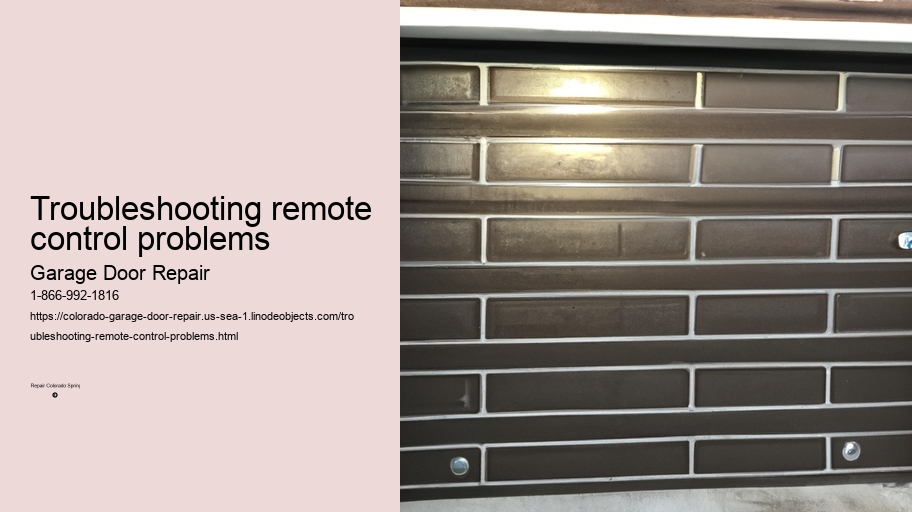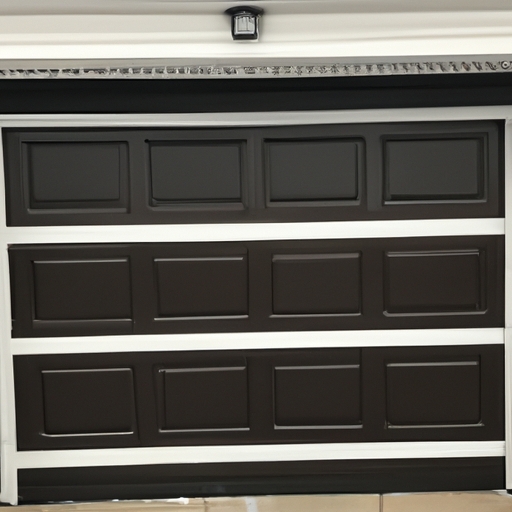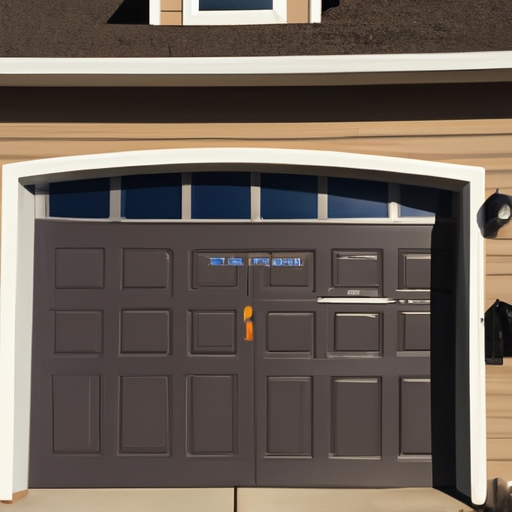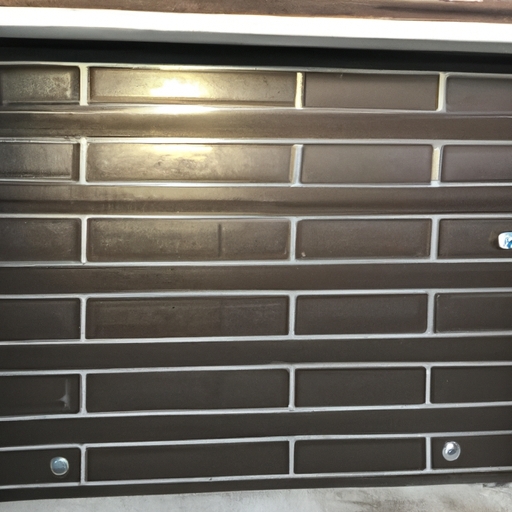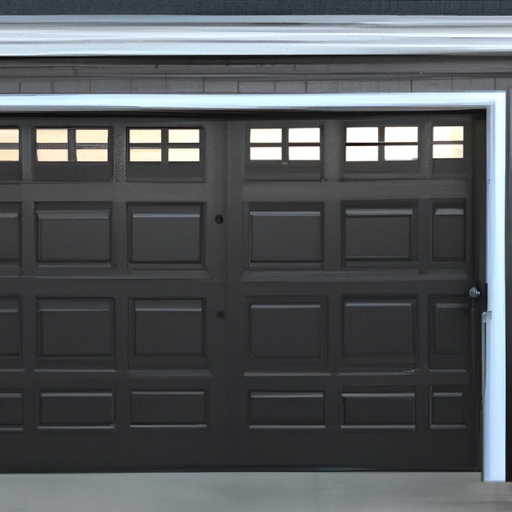Common issues with garage door remote controls
Transition Phrase: Moving on to the common issues with garage door remote controls, let's delve into troubleshooting remote control problems.
When it comes to garage door remote controls, there are several (unlikely) common issues that can cause frustration and inconvenience. One of the most prevalent difficulties is when the remote control simply refuses (not) to work. This (pesky) problem can be caused by a variety of factors, such as dead batteries or a malfunctioning circuit board. To resolve this issue, try replacing the batteries first and if that doesn't do the trick, consult a professional technician for further assistance.
Another irritating issue that may arise is when the garage door starts behaving erratically after pressing the remote control button. This (annoying) problem often occurs due to interference from other electronic devices nearby or a faulty sensor system. In order to overcome this challenge, make sure there are no potential sources of interference close by and ensure that all sensors are correctly aligned and functioning properly.
Moreover, occasionally you might encounter an uncommon situation where your garage door opens or closes on its own accord without any prompting from your trusty remote control. This (strange) phenomenon is usually attributed to radio frequency interference or signal jamming from external sources like nearby military bases or even extraterrestrial beings (yes, seriously!). To tackle this peculiar issue head-on, consider installing a new opener system with enhanced security features or seek guidance from an expert in resolving unusual occurrences.
In addition to these bizarre scenarios, sometimes you may find yourself in a distressing predicament where your garage door operates flawlessly using the wall-mounted control but not responding at all when using the remote control. This dilemma often arises due to signal transmission problems between the remote control and receiver unit. To rectify this annoying setback, check if there are any obstructions impeding the signal path and ensure that both devices are within range of each other.
To conclude our discussion on common issues with garage door remote controls, it is crucial to remember that troubleshooting problems in this realm can be quite challenging. Nevertheless, by familiarizing yourself with these potential difficulties and employing the appropriate solutions, you can overcome them and enjoy the convenience and security that a functional garage door remote control provides. So keep calm, stay patient (and not) frustrated when faced with these remote control mishaps!
Checking the batteries and power source of the remote control
Transition phrase: Additionally, when troubleshooting remote control problems...
When it comes to troubleshooting remote control problems, one of the first things you should always do is checking the batteries and power source. Sometimes we tend to overlook this simple step, but believe me, it can save you a lot of headache! Without enough power, your remote control won't function properly and you might end up frustrated (or even angry) at your TV or other electronic devices.
To begin with, let's start by checking the batteries. It's important to ensure they are properly inserted in their compartment. Many times, people forget to put the batteries in the right way, upside down or backwards. This simple mistake can prevent your remote control from working as intended. So always double-check (and triple-check if necessary) that the positive and negative ends are aligned correctly.
Next, take a look at the power source. If your remote control requires an external power supply such as an adapter or cable connection, make sure everything is securely connected. Sometimes loose connections can occur due to accidental bumps or general wear and tear. By firmly plugging in all necessary cables or adapters, you can rule out any power-related issues that may be affecting your remote control's performance.
Furthermore, don't forget to inspect for any physical damage on both the batteries and power source components. Over time, corrosion or leakage can occur in battery compartments or around cable connectors. These issues may require cleaning or replacing damaged parts altogether. Neglecting this step could lead to further complications and ultimately render your remote control useless.
In conclusion, overlooking the importance of checking batteries and power sources when troubleshooting remote control problems would be a big mistake! By ensuring proper battery insertion, secure power connections, and inspecting for physical damage regularly, you can avoid unnecessary frustration caused by malfunctioning remotes! So remember folks: "Always check before panicking!"
Resetting or reprogramming the remote control
Troubleshooting remote control problems can be a real pain sometimes, ya know? (Oh my gosh), when the remote stops working or starts acting wonky, it's enough to drive anyone crazy! But fear not, my friends, for there is a solution - resetting or reprogramming the remote control. By performing this simple task, you can often fix those pesky issues and regain control over your entertainment kingdom.
Now, let me tell ya why resetting or reprogramming the remote control can be a game-changer. First off (by all means), it clears out any glitches or malfunctions that may have occurred in the remote's software. It's like giving your trusty sidekick a fresh start! And who doesn't love a fresh start?! Secondly (in addition), it allows you to reconnect the remote with its intended device(s). Sometimes (heaven forbid), they just need to get back on speaking terms!
To reset or reprogram your remote control, follow these simple steps:
1. Remove the batteries from your remote and wait for about 30 seconds.
2. While waiting (for Pete's sake), press and hold down any button on the remote for at least 5 seconds.
3. Put the batteries back in (goodness gracious) and make sure they are inserted correctly.
4. Point your remote at the device you want it to control and press any button to test if it's working fine now.
If this doesn't do the trick (oh no!), don't panic just yet! There might be other factors causing trouble with your beloved gadget. Check if there are any obstructions between your remote and the device or try replacing the batteries altogether.
In conclusion (you betcha), resetting or reprogramming your remote control is an excellent troubleshooting technique that can save you from many headaches. So next time you encounter problems with your little companion, give it a fresh start using these easy steps. You'll be back to channel surfing or controlling your favorite movies in no time, my dear friends!
Verifying the signal strength between the remote control and garage door opener
Troubleshooting remote control problems can be quite frustrating, especially when the signal strength between the remote control and garage door opener is not properly verified. (Oh no!) It's essential to ensure that this connection is working efficiently in order to avoid any inconvenience or security risks. (By the way,) Let's explore why verifying the signal strength is crucial and how it can help resolve these issues.
Firstly, when troubleshooting remote control problems, it's important to understand that the signal strength plays a vital role in ensuring seamless communication between the remote control device and the garage door opener. Neglecting to verify this could result in poor performance or even a complete failure of your remote control system. (Oops!)
To begin with, by checking the signal strength, you can identify if there are any interference factors affecting the communication between your remote control and garage door opener. These interferences could include obstacles like walls, other electronic devices, or even radio frequency disturbances from nearby sources. By eliminating these potential barriers, you can significantly enhance your remote control experience and prevent unnecessary headaches. (Yay!)
Furthermore, verifying the signal strength also helps troubleshoot any issues related to distance limitations. If you notice that your remote control only works within close proximity to your garage door opener but fails to operate from a distance, then it's highly likely that there's an issue with signal reception. This might require adjustments such as repositioning either the receiver or transmitter for better coverage range. By doing so, you'll effectively extend your remote control's reach and enjoy convenient access to your garage door from afar! (Wow!)
In conclusion,(to wrap things up) verifying the signal strength between your remote control and garage door opener is an integral part of troubleshooting any related problems. By ensuring optimal communication through proper verification methods, you can tackle interferences and overcome distance limitations for improved functionality.(Alright!) So next time you encounter any issues with your remote control system, don't forget to check the signal strength and make necessary adjustments. Your garage door will thank you!
Inspecting and replacing damaged or faulty components in the garage door system
Troubleshooting remote control problems can be a frustrating ordeal (oh no!). When your trusty garage door opener fails to respond to your commands, it's time to roll up your sleeves and get down to the nitty-gritty of fixing the issue. In this essay, we will explore the process of inspecting and replacing damaged or faulty components in the garage door system (no way!) as a means of resolving remote control problems effectively.
Firstly, when faced with remote control problems (gosh darn it!), it is essential to begin by thoroughly inspecting the various components that make up your garage door system. These may include but are not limited to: cables, springs, rollers, and hinges. One mustn't forget about checking for loose connections or frayed wires as well! Neglecting these potential culprits could result in further headaches down the line.
Once any damaged or faulty components have been identified through careful inspection (by golly!), they should be promptly replaced. It is crucial to ensure that you select high-quality replacement parts that are compatible with your specific garage door model. Installing subpar components may lead to recurring issues or even exacerbate existing ones! Therefore, paying attention to detail during this step is paramount.
Furthermore, it is worth noting that proper installation techniques are key (you betcha!). Even if you have obtained top-notch replacement parts, improper installation can still hinder their effectiveness. Take extra care while handling delicate components and follow the manufacturer's instructions diligently. This way, you can avoid unnecessary mishaps and ensure a smooth functioning garage door system.
In conclusion (!), troubleshooting remote control problems requires a methodical approach involving careful inspection and prompt replacement of damaged or faulty components in the garage door system. By taking these necessary steps with utmost care and precision (goodness gracious me!), one can restore functionality to their remote control effortlessly.
To sum up (!), maintaining a well-functioning garage door system is crucial for the convenience and security of your home. Don't let remote control problems get you down (heck no!). Roll up your sleeves, inspect those components, replace what needs replacing, and enjoy the seamless operation of your garage door once again!
Troubleshooting interference from other electronic devices
Troubleshooting remote control problems can be quite frustrating! You're just trying to relax and watch your favorite show, but suddenly the remote stops working. What could be causing this infuriating dilemma? Well, one common issue is interference from other electronic devices (like TVs or smartphones). When these pesky gadgets get in the way, they can disrupt the signals between your remote control and your TV. This leads to a lack of response when you press those buttons (which is really annoying)!
To fix this problem, you need to identify the source of the interference. Begin by inspecting all nearby electronics that could potentially interfere with your remote control's signal. Check if any devices are placed too close to each other or if there are any wires tangled together (a recipe for disaster!). If you find any such coexistence of devices, try moving them further apart or untangling those pesky wires.
Another likely culprit for interfering with your remote control is wireless routers. These technological marvels provide us with internet access, but they can also cause havoc on our precious remotes. Make sure your router is not positioned too close to your TV setup (a big no-no!). If it is, move it away and see if that solves the problem.
Additionally, keep an eye out for other wireless devices in the vicinity like cordless phones and baby monitors. They may seem innocent enough, but they have been known to meddle with remote control signals (oh no!). If possible, relocate these devices away from your TV area or simply turn them off while enjoying some quality television time.
In conclusion (!), troubleshooting interference from other electronic devices requires patience and a keen eye for potential culprits. By identifying and addressing these sources of interference - whether it be through separating conflicting gadgets or repositioning wireless routers - you can regain full control over your beloved remote! Now go forth and conquer those stubborn remote control problems once and for all!
